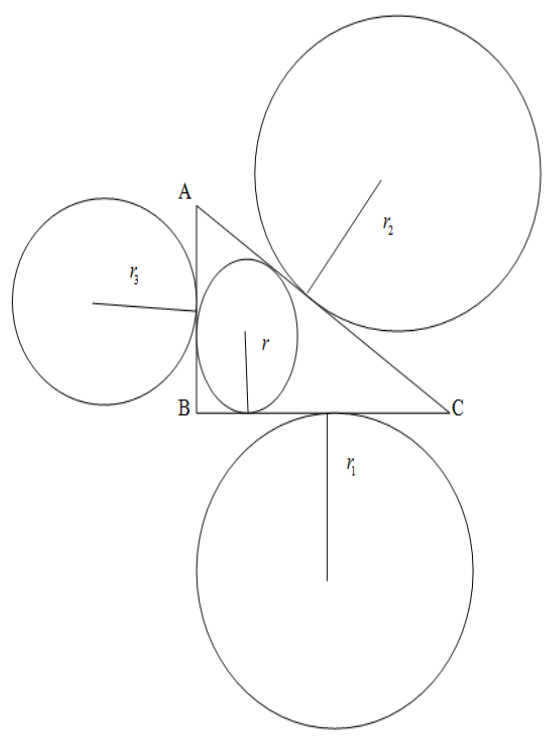Question
Question: If r is the radius of incircle and \({{r}_{1}},{{r}_{2}},{{r}_{3}}\) are the radii of the ex-circles...
If r is the radius of incircle and r1,r2,r3 are the radii of the ex-circles of the triangle ABC opposite to angles A,B,C respectively then find B if rr2=r1r3. $$$$
Solution
We substitute r=sΔ,r1=(s−a)Δ,r2=(s−b)Δ,r3=(s−c)Δ where a, b,c are the lengths of the sides BC, AC,AB respectively, s is the semi-perimeter of the triangle and Δ is the area of the triangle in the given equation rr2=r1r3 . We proceed to simplify the equation until we have to use r=(s−b)tan2B and then we solve for B to get the measurement of B.
Complete step-by-step solution:
__
We are given that r is the radius of in-circle and r1,r2,r3 are the radii of the ex-circles of the triangle ABC opposite to angles A,B,C respectively. We know from the formula that
r=sΔ,r1=(s−a)Δ,r2=(s−b)Δ,r3=(s−c)Δ....(1)
Where the a, b,c are the lengths of the sides BC, AC, AB respectively, s is the semi-perimeter of the triangle and Δ is the area of the triangle.
We also know the formula involving tangent and length of the sides as
r=(s−a)tan2A=(s−b)tan2B=(s−c)tan2C...(2)
We know that the area of the triangle with semi-perimeter s and the lengths of the sides a, b,c is
Δ=s(s−b)(s−a)(s−c)...(3)
We are given in the question that
rr2=r1r3
We are asked to find the measurement of the angle B. We put the values of r,r1,r2,r3 in terms of area, semi-perimeter and side in the given equation and get ,
